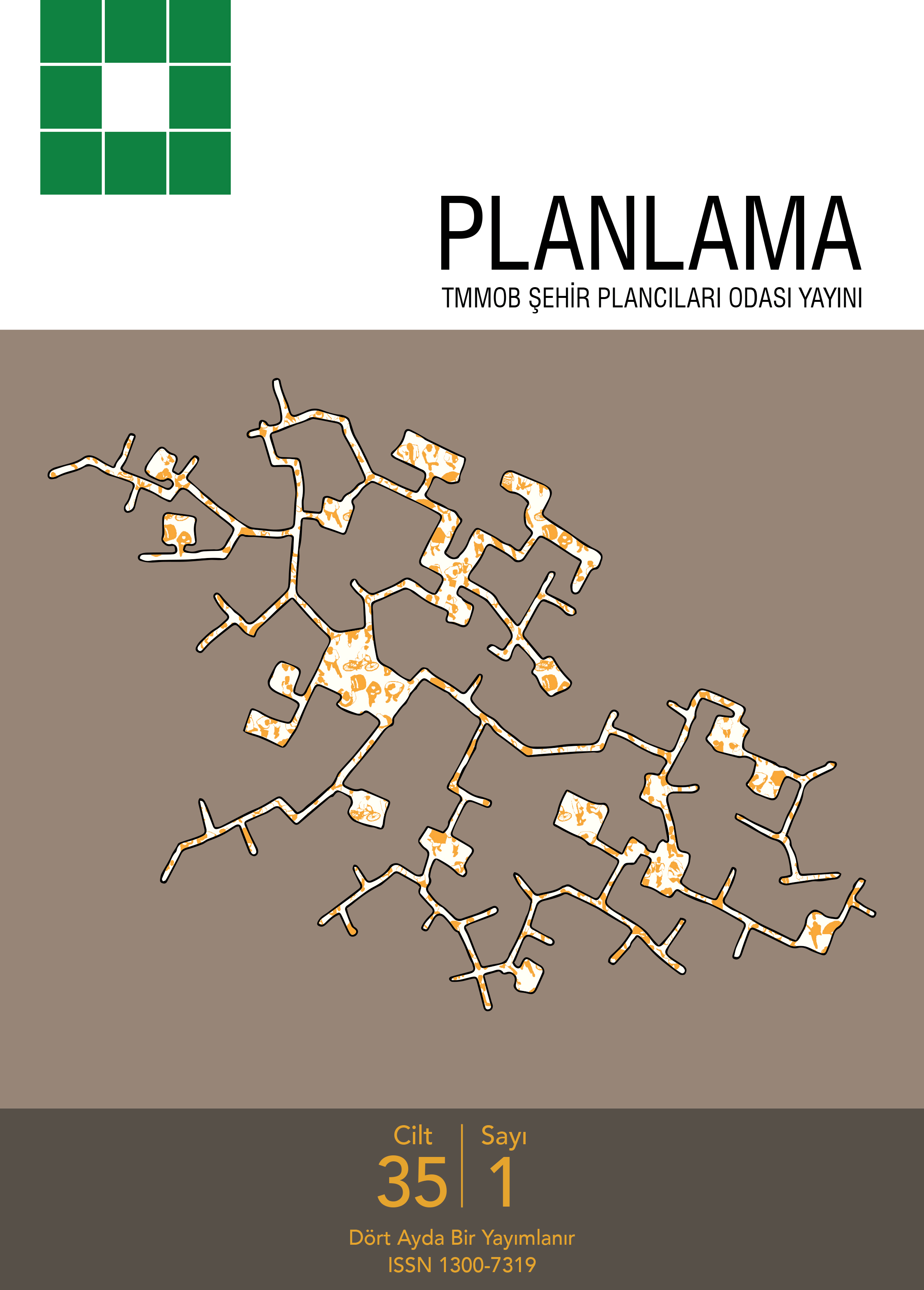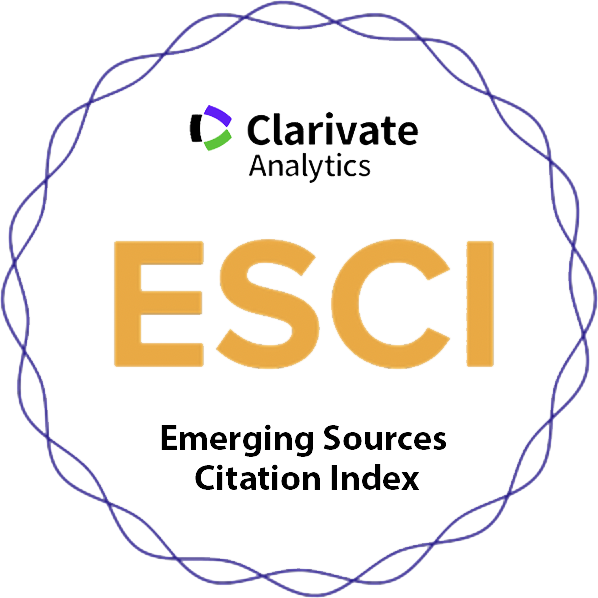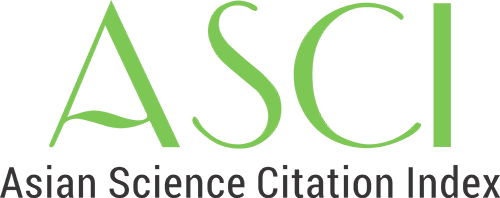Volume: 34 Issue: 3 - 2024
| EDITORIAL | |
| 1. | Editorial Page XI |
| RESEARCH ARTICLE | |
| 2. | Community Engagement Challenges in Public Space Design: Lessons from the Spanish Cases Sibel Polat doi: 10.14744/planlama.2024.68095 Pages 221 - 245 The aim of this article is to detect problems of community engagement and to develop recommendations to strengthen engagement processes in public space design in Spain by creating an analytical framework which defines dimensions and variables of community engagement in public space design. The research method is based on literature review and a case study including observation and face-to-face /online interviews on three projects in Spain, as Valladolid Millennium Square, Madrid Rio Park and Barcelona Poblenou and Sant Antoni Superblocks. The projects were analysed in three dimensions related to community engagement in public space design as legal, institutional and political context, citizen participation process, public space design and implementation process and the outcomes of the projects were evaluated. In all cases, the projects were criticized for lacking clear design objectives to address future urban design challenges, their high costs of implementation, and inefficient governance in achieving desired outcomes. Recommendations were also made to improve design and implementation processes and to enhance stakeholder participation. The original value of the study is the effort to contribute to urban design process, both academically and practically, by drawing lessons from public space projects implemented in different contexts and scales through a systematic and holistic analysis method related to community engagement in public space design. |
| 3. | Evaluation of Success Factors of Shared Micromobility Systems with AHP and DEMATEL Methods Rukiye Gizem Öztaş Karlı doi: 10.14744/planlama.2024.54872 Pages 246 - 263 The usability of shared micromobility systems, which have emerged as an alternative to traditional means of transporta-tion, is very important in achieving the expected benefits. The aim of this study is to identify the critical factors affecting the success of shared micromobility systems and to reveal the importance levels and interactions of these factors. For this purpose, AHP and DEMATEL methods were used to calculate the weights of criteria and subcriteria and to analyze the causal relationships between them. As a result of the literature review, main criteria affecting the success of micromobility systems such as infrastructure and accessibility, pricing and payment options, technology and ease of use, government and municipal policies, environmental awareness, urban density and geographical conditions, user experience and safety, integration with public transportation, and social and cultural factors were identified. AHP analysis revealed that infrastructure and accessibility and pricing and payment options had the highest weights. DEMATEL analysis showed that criteria such as pricing and payment options, government and municipal policies, and integration with public transportation play important influencing roles on the system, while technology and app ease of use and user experience and safety are more vulnerable to influence. The study provides strategic recommendations to improve the effectiveness of shared micromobility systems and develop sustainable urban transportation solutions. These recommendations contribute to strategic decision-making by analyzing the success factors of micromobility systems in a more holistic way, identifying priority criteria and evaluating the causal relationships between these criteria. |
| 4. | Analyzing the Morphological Structures of Erzurum, Sivas, and Mardin Cities through Syntactic Methods based on Kemal Ahmet Aru's Research Müge Özkan Özbek doi: 10.14744/planlama.2024.08634 Pages 264 - 294 This article focuses on the morphological urban analyses of Kemal Ahmet Aru and aims to examine the urban growth relation-ships of Erzurum, Sivas, and Mardin in the present day. Based on the typologies classified in Arus Turk Kenti bookConcentric City, Radial City, and Linear Citythis study seeks to re-evaluate the growth and grid pattern changes in these cities, which Aru analyzed between 1970 and 1990. It specifically focuses on the changes in the historical cores that define the city centers. The Space Syntax method is used for analysis, providing an effective framework to understand how these morphological types have maintained or altered their forms. This methodology helps in understanding not only the physical data but also the impact of human behaviors and relationships on spatial formation. The study also investigates whether the development schemes and market areas that Aru foresaw align with the current urban patterns. By comparing the changing macroforms of these cities over 30−40 years, the article aims to contribute to urban morphology by uncovering the reasons for these transformations. |
| 5. | Morphological Analysis of Rural Settlements That Have Been Relocated Due to the Construction of Dams: The Example of Dedemli Village Raziye Çınar, Zafer Kuyrukçu doi: 10.14744/planlama.2024.65982 Pages 295 - 314 Rural settlements are residential areas integrated with nature, pre-serving traditional and cultural values and meeting the daily needs of individuals by environmental data. These rural settlements are analyzed into two main categories: mountain and plain settlements. In recent years, rural settlements have been under threat of extinction or subjected to relocation processes, particularly due to various natural or artificial reasons, especially dam projects. This study aims to conduct a morphological analysis of the settlement scale following the relocation of Dedemli Village to the Meram Dedemli Neighborhood in the Konya/Hadim district due to the construction of the Bozkır Dam. Firstly, the settlement areas were defined, roads and boundaries, parcel-structure-road relations, common use spaces, occupancy-vacancy, function, number of floors, and green space analyses were carried out and evaluated comparatively. Space Syntax Method was used to provide a quantitative perspective in the study, integration maps and data were revealed, and axial analyses supported these data. Upon examination of the analysis results, it was determined that the integration, connectivity, and intelligibility values of the new settlement, and the results of axial analysis were higher compared to the old settlement. In contrast, the mean depth value was lower. Therefore, it was observed that compared to rural mountain settlements with organic texture, planned rural plain settlements have a more readable, well-connected, and integrated settlement system. Consequently, it can be said that site selection and planning are critical processes for providing effective and healthy settlements in relocated rural settlements. |
| 6. | A Participatory, Innovative, and Sustainable Model in Local Development: Silivri Agricultural Production and Research Center (TURAM) Gülşen Pelin Olcay doi: 10.14744/planlama.2024.23500 Pages 315 - 329 Since the 1980s, local and regional development approaches have broadened their focus beyond economic issues to encompass social, ecological, political, and cultural concerns. Innovation, knowledge, and learning have started to occupy a central role in local and regional development policy. Moreover, the role of local governments in local development has been strengthened. In Turkey, changes made to legislation in the 2000s brought rural areas under municipal administration. In line with these changes, Silivri Municipality established TURAM in 2010 with the participation of stakeholders, as well as TURAM Vocational and Technical High School in 2017, to contribute to local development. At TURAM, production, R&D, and training activities have been carried out in cooperation with NGOs and universities. This article present the example of Silivri TURAM to argue that municipalities can create participatory, innovative, sustainable models and play a crucial role in fostering local development. In our study in 2022, the TURAM model was examined, and its social, economic, and environmental impacts were evaluated. In the study, primary qualitative data were obtained from face-to-face interviews with municipal employees and TURAM stakeholders using semi-structured forms. Secondary data were gathered from regional statistics, municipal documents, and online news related to TURAMs activities. Findings show that Silivri Municipality managed to implement a participatory, innovative, and sustainable model by effectively utilizing its limited resources. The model has positive social, economic, and environmental impacts, including the dissemination of high value-added products, the appropriate use of agricultural areas, and the facilitation of scientific research and education. |
| 7. | You Are Far Away now! Aftermath of Displacement Processes Induced by 6 February 2023 Earthquakes in Turkey Uğurcan Ayik, Zehra Obut Bilim, Büşra Sena Durmuş doi: 10.14744/planlama.2024.49260 Pages 330 - 341 Recently, Turkey experienced a disaster in Kahramanmaraş on 6 February 2023. Two consecutive earthquakes with magnitudes of 7.8 Mw and 7.5 Mw, spatially and socially affected 11 provinces of Turkey (Kahramanmaraş, Hatay, Adıyaman, Osmaniye, Gaziantep, Şanlıurfa, Malatya, Diyarbakır, Adana, Kilis, and Elazığ). Roughly 2.7 million people have been predicted to be displaced as a result of the earthquakes. Additionally, more than 50,000 people lost their lives. This study focuses on the forced migration movements to Siirt province, Turkey, due to the displacement of earthquake victims. The aim of the study is to reveal the post-earthquake experiences and choice of new settlements in Siirt. Two datasets were utilized to achieve this goal. A list of people who migrated to Siirt after the earthquake was obtained from AFAD. Additionally, interviews were held with 16 people affected by the earthquake. The interviews were transcribed and coded using MAXQDA 2020. The results showed that the majority of people forcefully migrated to Siirt after the earthquakes preferred to settle in urban and central areas. Kinship ties and being born in the area were the main reasons for this choice. Moreover, significant issues were found in the areas of housing, basic needs, and institutional structure after the earthquakes. |
| 8. | A Research on the Relationship Between Functional Transformation in Spaces and Gentrification, Nevşehir Uçhisar Tuğçe Utku Sümer doi: 10.14744/planlama.2024.48802 Pages 342 - 359 The concept of gentrification, which was widely discussed around the world in the 1960s, concerns the complex phenomenon of physical and social mobility. Since its emergence, numerous definitions have been proposed, although they are largely based on the manner in which it was initially conceptualised. Although many definitions place an emphasis on the social consequences of gentrification, this broad perspective often fails to take into account the contextual diversity and specific characteristics of gentrification in various cities. This study aims to demonstrate that gentrification is linked to spatial and physical transformations, which are shaped by spatial dynamics that can either impede or accelerate the process. The Uçhisar town of Nevşehir was selected as the study area due to its transformation driven by tourism and its historical architecture. The influx of tourists has resulted in the conversion of numerous rock-carved houses into accommodation facilities. The research entailed an examination of these transformations and the conduct of interviews with architects and operators engaged in the renovation processes. The objective was to assess the impact of alterations to the built environment on gentrification, the influence of gentrification on that environment, and the potential emergence of a new architectural language. Furthermore,there is a cyclical relationship between spatial transformation and gentrification, either triggering or inhibiting it during the transformation process. This demonstrates that the concept has spatial parameters, moving beyond its traditional definition as a social problem. Furthermore, it highlights that the concept is not solely a sociological phenomenon. |
| 9. | Spatial Dynamics, Public Sphere, and Phenomenology: The Integration of Social Infrastructure through Participatory Design Processes Devran Bengü doi: 10.14744/planlama.2024.63308 Pages 360 - 379 This article explores how spatial tools with the potential to revitalize the public sphere can be examined within the framework of social infrastructure. It discusses how measurable dynamics like social capital, sense of place, and collective memory can be linked to public sphere norms and how new spatial tools can be developed based on local needs. The importance of integrating local knowledge into spatial design processes is emphasized. The article presents a theoretical framework examining the relationship between spatiality and the public sphere, investigating how social infrastructure tools should be structured. Drawing on phenomenological approaches, the study outlines design criteria, emphasizing the potential for new spatial tools that can revitalize the public sphere through spatial dynamics in integrated urban planning and architecture. The study suggests that theaters and other socio-cultural facilities can act as social infrastructure tools, revitalizing the public sphere through participatory design focused on spatial dynamics. It highlights the role of dynamics such as social capital, sense of place, and collective memory in increasing these tools' effectiveness. In conclusion, the study focuses on spatial dynamics and phenomenological approaches to show the potential for developing new spatial tools that strengthen the public sphere. These tools are proposed as social infrastructure mechanisms to improve the vitality and functionality of the public sphere. The article underscores the importance of an integrated approach in architecture and urban planning, demonstrating the possibility of creating diverse and functional spatial tools for a more democratic and sustainable society. |
| BOOK REVIEW | |
| 10. | Book Review: Tekeli, İ. (2023). Açık Planlamaya Doğru. Ankara: İdealKent Yayınları Meriç Kırmızı doi: 10.14744/planlama.2024.13549 Pages 380 - 383 Abstract | |
| OPINION LETTER | |
| 11. | Ecotourism-Based Destruction in the North Aegean Coastal Areas and Hinterland: The Case of Ayvacik, Canakkale Buse Çiftçisertbaşı doi: 10.14744/planlama.2024.81594 Pages 384 - 390 Abstract | |
| OTHERS | |
| 12. | Reviewers List Page 391 Abstract | |













